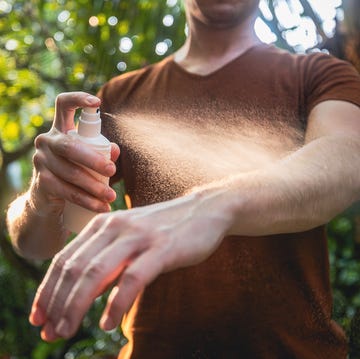We survived one polar vortex already. So before the next round of glacial temperatures approaches, take steps to protect yourself against these three lesser-known dangers.
YOUR BRAIN CAN FREEZE. Sure, you’ve heard of people dying of hypothermia. But know this: At about the same body temperature that makes you shiver the hardest—95 degrees Fahrenheit—your decision-making and coordination abilities also suffer, says Duke University physician Claude Piantadosi M.D., author of The Biology of Human Survival: Life and Death in Extreme Environments. The exact temperature and timing depends on a lot of factors, including your height, weight, and body fat percentage. But on average, at a windchill of -40 degrees, you’ll likely survive only 5.5 hours outdoors in regular clothes.
DO THIS: Layer up, even on your feet. Instead of just one heavy coat, pile two to three lightweight, breathable layers on top of each other. And don’t forget gloves, a hat, and proper footwear: “Double-insulated ski boots provide the best protection against this kind of cold,” Dr. Piantadosi says. (Try Alico Telemark Ski Boots, $422.70 at Sierra Trading Post.)
YOU’RE MORE INJURY-PRONE. Frostbite isn’t the only danger of cold-weather workouts. Constricted blood vessels do a poor job of shuttling blood to your muscles and tendons, meaning they stay cold and inflexible for far longer. As a result, your risk for sprains, strains, and other musculoskeletal injuries rises as the mercury drops, says Scott Smith, M.D., orthopedic surgeon for Texas Orthopedics in Austin.
DO THIS: If you just can’t bear the treadmill, lengthen the amount of time you warm up before pushing yourself hard, Dr. Smith advises. Do dynamic moves, like side-shuffles and slow jogging, until you’ve broken a light sweat. And unless you have special training to deal with the very cold and Arctic-approved gear (like Polartec, which is in the U.S. Army’s extended cold weather system), it’s best to move things indoors when the windchill hits about -40, Dr. Piantadosi advises.
COLDS AND FLU FREEZE TOO. Sorry, Mom—cold air doesn’t actually cause colds. In fact, subzero temps offer some degree of protection. Because colds and flu tend to spread in nasal droplets, their transmission may slow when everyone’s snot freezes, says Amesh Adalja M.D., an infectious disease physician at the University of Pittsburgh.
But several other factors could actually increase your risk of catching a bug during the deep freeze, he notes. The flu virus spreads more easily in dry, cold air, and frigid conditions impair the ability of hairs in your nasal passages to trap viruses before they enter your respiratory system. And in the stress of a severely cold environment, your immune system works less efficiently, says pulmonologist David Ross, M.D., of the David Geffen-UCLA School of Medicine.
DO THIS: Mom may have been wrong about the reasons, but she’s right about the solution. Wash or sanitize your hands frequently, steer clear of sick people, and if you haven’t yet, get a flu shot.













